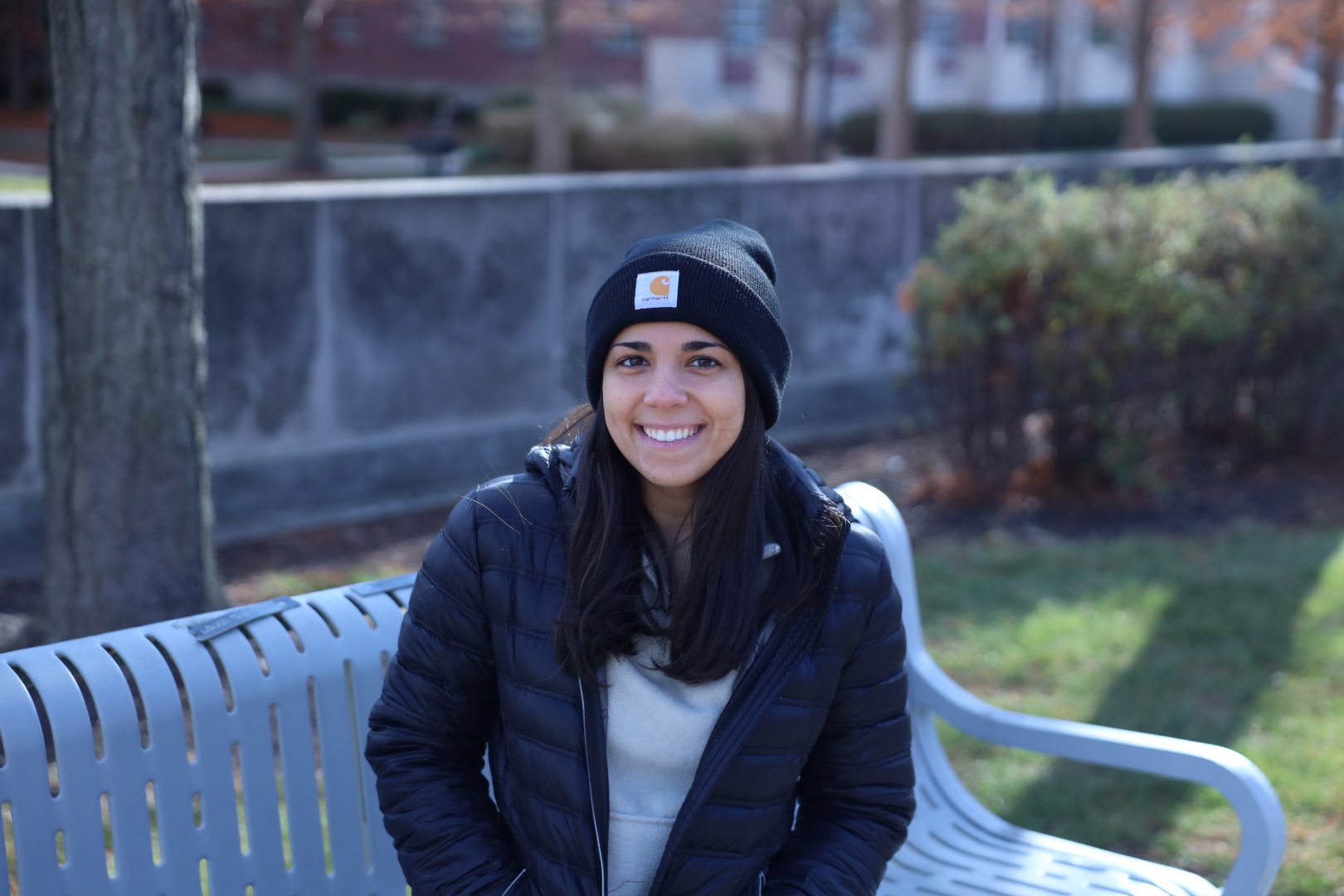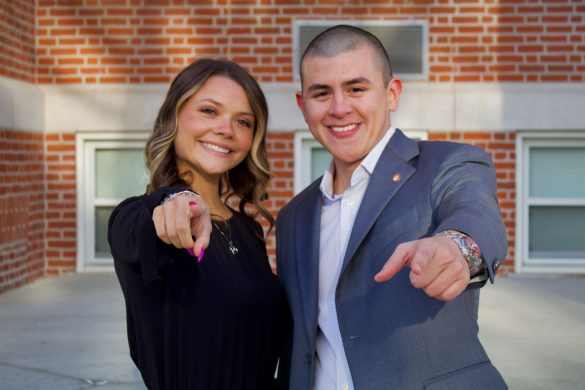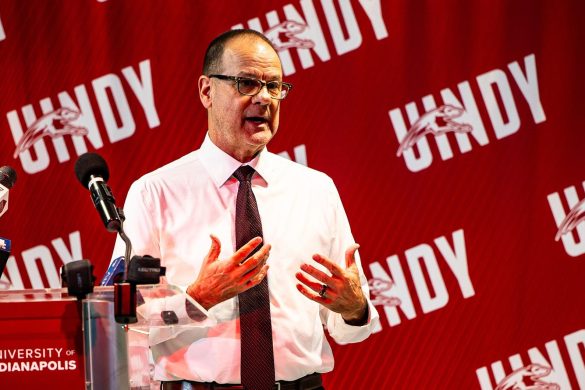With holidays like Veterans Day and Thanksgiving, the month of November is full of remembrance, celebration and togetherness for those in the United States who observe them. For the last 32 years, November also has been designated as Native American Heritage Month, according to the United States Senate. The month was declared a time of recognition for Indigenous people and the land that was occupied before the existence of the United States. The bill was passed by Congress and signed into law by President George H. W. Bush in 1990, and since then Native American Heritage Month has been celebrated in November, according to the U.S. Senate. Although Thanksgiving is a holiday celebrated across the country for many families and friends to come together to commemorate the season’s harvest and reflect on the past year, Thanksgiving is also a day of observance and grieving for Indigenous communities throughout the U.S.
According to The Indianapolis Public Library’s website, Indigenous Peoples of America recognize Thanksgiving as a day of mourning, a time to remember ancestral history and a day to acknowledge and protest the racism and oppression that they continue to experience today. In Indianapolis, the land occupied before the colonization of the area was inhabited by the Miami Tribe of Indiana, according to University of Indianapolis Professor of Anthropology Christopher Moore.
“This is the ancestral land of the Miami, and [the Miami Peoples] still feel that way,” Christopher Moore said. “They may not have any legal claim to the land, but they still have a cultural claim to the land, and that’s important.”
According to the Kokomo Tribune, about half of the Miami People were forced out of their homelands in 1846, when some went on to Kansas and some to Oklahoma. Sophomore exercise science major and Miami Tribe member Emma Moore said she is a member of the Miami Tribe of Oklahoma. The tribe originated in the Indianapolis area, but they were stationed out of Oklahoma after they were forcibly removed by the United States government in the mid 1800s. Emma Moore is the only student currently attending UIndy who is registered to an Indigenous Nation and holds a Native American Tribal number, according to Vice President, Chief Inclusion Officer, Interim Vice President for Student Affairs and Dean of Students Amber Smith.

“I’m the only one who is actually identified, quote, a ‘Native American,’” Emma Moore said. “I don’t know if that’s because I have a tribal number–it’s kind of like a Social Security number–but I thought that was really interesting.”
Sophomore psychology major Jezalyn Hyzer, a student who recently discovered she had an Indigenous ancestor, said she wished that for the month of November and Indigenous heritage would be discussed more. Hyzer said she also wishes Indigenous culture and the true origins of Thanksgiving would be talked about more in the U.S. The “whitewashed” versions seen in textbooks and taught in elementary schools are not telling the history and traditions of Indigenous Peoples, she said.
“Native Americans were on this land, and they were kicked off of it,” Hyzer said. “It was claimed as somebody else’s, when in fact, under Native American beliefs, nobody owns any one piece [of land] because it’s not ours to own. It’s ours to cooperate with and nourish, because we have to take care of it in order for it to provide for us.”
Both Hyzer and Emma Moore presented a program titled “Indigenous Peoples’ Day Celebration, Art Experience Lab” on Oct. 10 to commemorate Indigenous People’s Day, which was celebrated on Oct. 9 this year, according to the UIndy Office of Inclusion and Equity. The program was split into three parts, with Hyzer focusing on Native Americans and their history in Indiana and Emma Moore focusing on appropriation versus appreciation. Senior Admissions Counselor for Diversity Recruitment and Assistant Director of the Office of Inclusion and Equity CariAnn Freed presented a slideshow discussing appropriation and modern Indigenous communities, according to Emma Moore.
“I did my poster on the history of Native Americans in Indiana,” Hyzer said. “That was about where they were and what tribes there were, what were the borders for each tribe based on our now, kind of, counties.”
UIndy also has developed a task force dedicated to drafting a land acknowledgment statement, according to Co-Director of the Community Research Center, Assistant Professor of Sociology and Graduate Program Director for Master of Arts and Applied Sociology Colleen Wynn, who is the task force co-chair, along with Christopher Moore. The task force is composed of 25 faculty, staff and students from throughout the university, according to Wynn. The land acknowledgment statement recognizes the ancestral Indigenous land that the university is on at major campus events and acknowledges the Indigenous communities who still have stewardship of the land, Christopher Moore said. Indigenous communities who still see the land as part of their heritage are recognized in the statement, he said.
“Tribes–even though Indigenous Peoples, most of them now reside out west–still see this as their homeland,” Christopher Moore said. “They didn’t move away and forget about where they came from.”
Emma Moore is also a member of the task force and said the acknowledgment is still in the process of being drafted, but it will serve as a way to let people know that the university recognizes that the land was not the university’s initially and to “give credit where credit is due.” She said the university might also be looking to increase the presence of Native Americans on campus, and the program would serve as a way to focus on making campus more inclusive and diverse.
According to Wynn, she and Christopher Moore were involved in the university Faculty Learning Community, an initiative intended to encourage faculty to engage in a year-long study of a particular topic or issue in teaching, scholarship or service. Last year, the FLC discussed placemaking and how to create a community and who belongs in those spaces, Wynn said. The FLC talked about how the university does not have a land acknowledgment, and she and Christopher Moore thought that would be a good thing to look into, she said.
“We wrote up a letter–and sent that to the faculty senate executive committee–that said, ‘We’ve drafted this land acknowledgment. We would love it if you all could consider endorsing this,’” Wynn said. “But then through some discussions with people, and in part because there’s been a lot of changes in the administration, we decided that rather than asking for a vote of endorsement at that point, what we actually wanted to do was ask if they would create a task force that could work this year, so that we could have a broader involvement of people on the campus to help to discuss aspects of this and to help kind of educate people.”
Hyzer said she is not sure that designating November as Native American Heritage Month has done much to celebrate or educate people occupying Native land. A lot of the Native American reservations are impoverished, and looking at the reservations in the Great Plains, there is nothing there for communities to use, because they were removed from the Midwest, Hyzer said. Where the Indigenous Peoples used all the land and knew how the land worked and how to make it provide for them, they were then moved through the Trail of Tears and other forced displacements that removed them from their lands, she said. The Indigenous Peoples had to adapt to a new land in the Great Plains, where it was very difficult to grow anything, she said. She said given the discrepancies in teachings about history, she finds celebrating the Thanksgiving holiday particularly difficult.
Emma Moore said that she had not heard much about Native American Heritage Month until this year and that focusing on the Thanksgiving holiday as a time of mourning is kind of hard. She said her whole family is not all primarily Native American, so they try to make Thanksgiving about a time of being together and spending time with family. She said Thanksgiving can be used as a way to remember that without Native Americans and their contributions, there would not be a time to celebrate. Not being afraid to reach out and ask questions, especially from professors or people at libraries or anywhere to get information is worth pursuing, Emma Moore said, and that being informed is better than doing something disrespectful.
“I think people need to know that Native Americans are not just something of the past. Native Americans are everywhere. They’re still being oppressed today, whether it’s around us where we can see it, or just around the country,” Emma Moore said. “There are some really big issues that a lot of Native Americans face, especially Native American women. So I think people just need to advocate more for them. Maybe look into ways that they can support Native American businesses. Maybe just take a look into their own history and see what connections they might have.”








